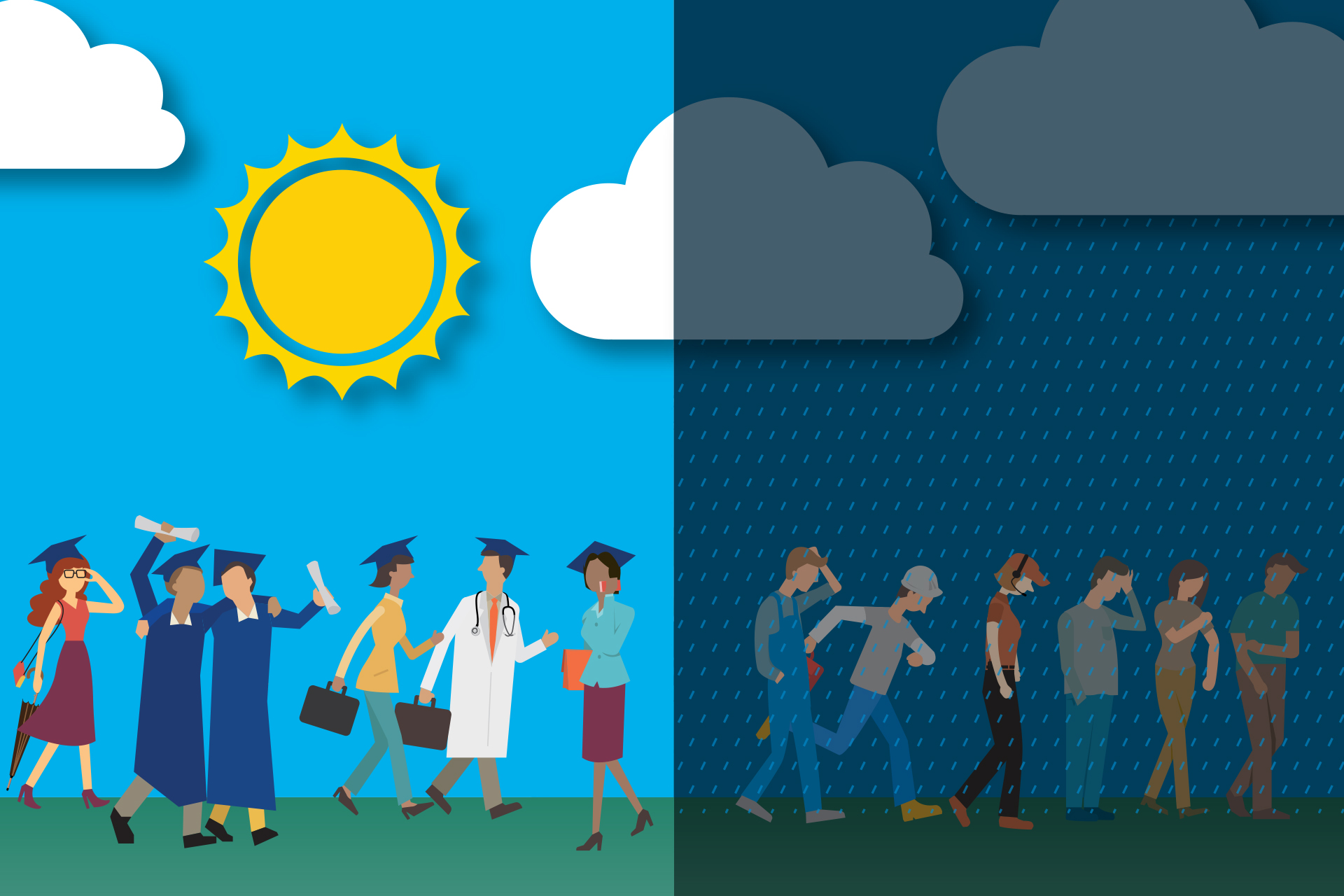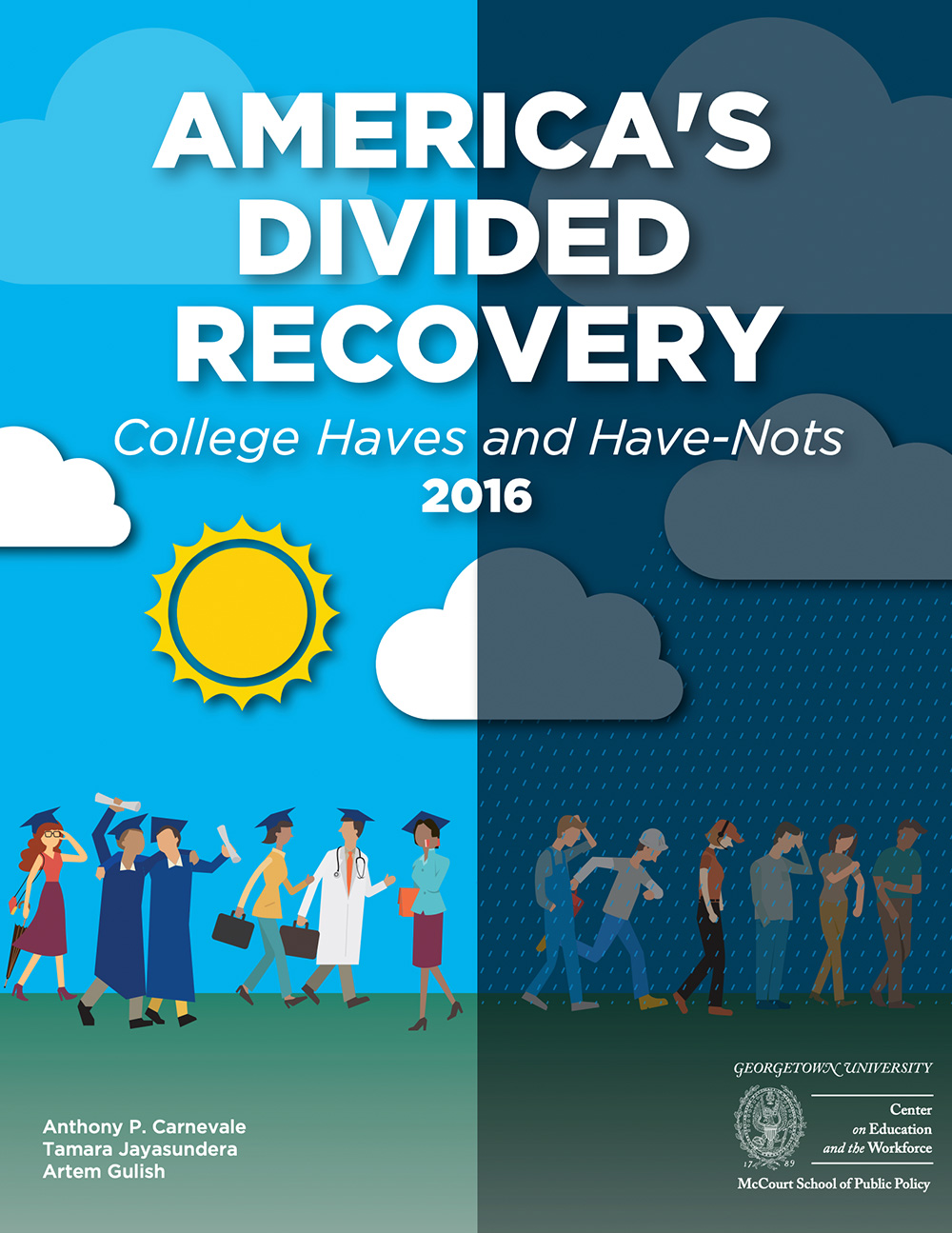America’s Divided Recovery
College Haves and Have-Nots
Over 95 percent of jobs created during the recovery have gone to workers with at least some college education, while those with a high school diploma or less are being left behind. America’s Divided Recovery: College Haves and Have-Nots reveals that those with at least some college education have captured 11.5 million of the 11.6 million jobs created during the recovery. While jobs are back, they are not the same jobs lost during the recession. The Great Recession decimated low-skill blue-collar and clerical jobs, whereas the recovery added primarily high-skill managerial and professional jobs.
Key Findings
Infographics
Video
Watch our video and learn about the stark divide between workers with a college education and workers with a high school diploma or less in the post-recession economy.
Interactive Tool
Job Change in Recession and Recovery
College Major Earnings Tool: Find out how much your college major is worth using this interactive tool. Explore national median earnings by undergraduate and graduate major as well as by state. You can also find lifetime earnings by major.
Resources
The jobs recovery deepens the economic and political divide between workers with and without a college education. Our report finds that over 95% of the jobs created in the recovery have gone to those with education beyond a high school education. The report also finds:
- For the first time, college graduates make up a larger share of the workforce than workers with a high school diploma or less.
- Out of the jobs created in the recovery, 8.4 million have gone to those with a bachelor’s degree or higher, while high school jobs only grew by 80,000.
- Occupational and industry shifts have been major drivers of change in the labor market.
- The recovery added primarily managerial and professional jobs.


